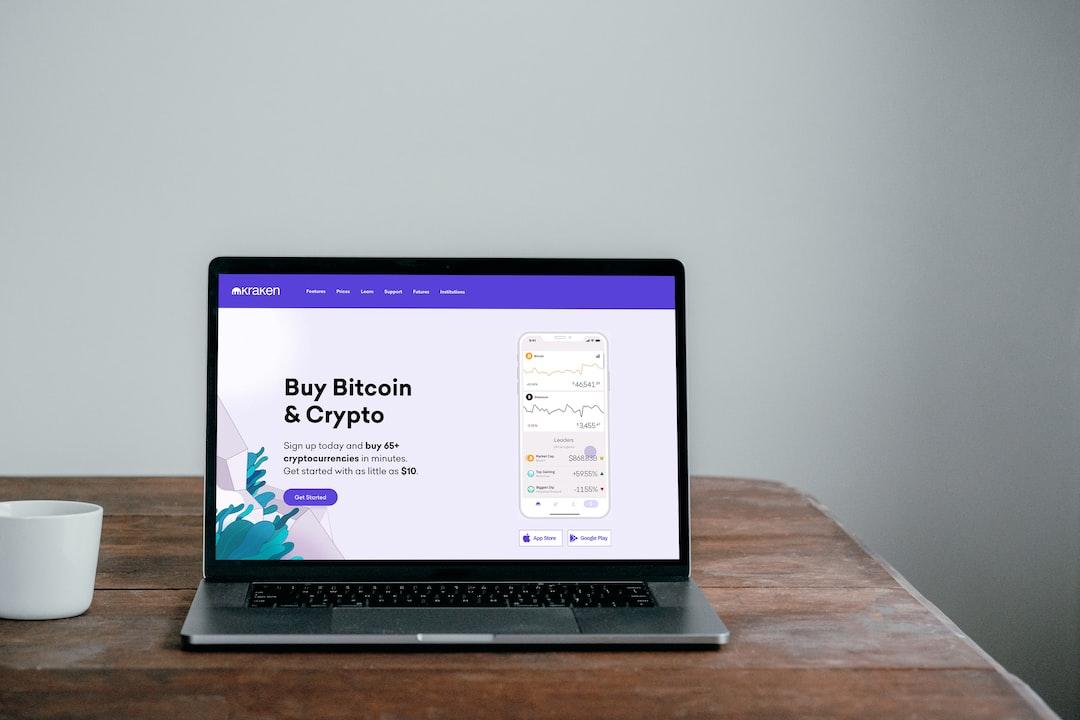Author: sui14, Translation: Ladyfinger, BlockBeats
Editor’s Note:
This article provides an in-depth analysis of the impact of the Dencun upgrade on the Ethereum L2 network, revealing positive outcomes such as reduced transaction costs, increased user activity, and asset inflows post-upgrade. It also highlights negative effects like network congestion and high rollback rates due to MEV activities. The article calls for community attention and collaborative development of MEV solutions tailored to L2 characteristics to foster a healthy Ethereum ecosystem.
Introduction
In this article, we aim to provide a data overview of the current L2 status. We monitored the significance of the gas fee reduction on L2 due to the Dencun upgrade in March, studied the evolution of activities on these networks, and emphasized emerging challenges driven by MEV activities. Additionally, we discuss potential obstacles in developing MEV tools and solutions for L2.
Positive Aspects: Adoption of L2 Post Dencun Upgrade
Gas costs reduced by 10x after the Dencun upgrade
Gas fees on Ethereum L2 consist of two parts: the cost of executing transactions on L2 and the cost of submitting batch transactions to Ethereum L1. Different L2 gas fee structures and ordering rules vary based on their developmental stages and design choices. For instance, Arbitrum operates on a first-come, first-served (FCFS) basis where transactions are processed in the order they are received. In contrast, Optimism (OP Mainnet) and Base, as part of the OP Stack, use a priority gas auction (PGA) model that combines base fees with priority fees. Users can opt to pay higher priority fees for quicker inclusion and earlier appearance in blocks. Understanding fee structures is crucial for grasping ecosystem growth and MEV dynamics.
Historically, Ethereum L1 fees constituted the majority of costs users incurred when trading on L2, as depicted by the black bars in the chart below. However, following the Dencun upgrade on March 14, L2 shifted from using calldata to a more economical method known as “blobs 1” for batch submissions to L1. This temporary storage includes its gas auction, composed of blob base fees and priority fees.

Since Dencun, there has been a significant reduction in fees paid to L1 from L2—graphical breakdowns of OP Stack chains illustrate substantial changes, with L1 costs plummeting from over 90% to just 1%, while L2 costs now constitute 99% of total costs. This shift resulted in an overall tenfold decrease in average total gas fees on L2, for instance, OP Mainnet’s average gas fees per transaction dropping from approximately $0.5 to $0.05.

Surge in Activity on L2
Following cost reductions, there has been a notable increase in activity and usage on L2, evident from the skyrocketing gas fees on L2 as shown in the chart above. It is noteworthy that on March 26, Base’s average gas fees exceeded pre-upgrade highs. To accommodate more transactions and reduce network congestion, Base increased its gas target from March 26 onwards and subsequently made several adjustments.
The chart below highlights daily transaction volumes on L2, showcasing significant growth across networks like Arbitrum, Base, and OP Mainnet. Particularly, Base’s daily transaction volume quadrupled, now handling approximately 2 million transactions per day.

While it is challenging to ascertain whether this is organic participation or influenced by incentive programs and Sybil activities—since the improvement in market conditions and the advent of the memecoin season on Solana driven by WIF since late last year, all major L2 active addresses and DEX trading volumes have increased significantly post EIP-4844 upgrade, especially on Base and Arbitrum.


Flow of Assets into L2
With improved market conditions and the arrival of the memecoin season sparked by WIF on Solana since late last year, TVL on L2 has been steadily increasing. It is noteworthy that Base has become the fastest-growing chain, with its recent total TVL surpassing that of OP Mainnet.

Since early March, Base has seen approximately $1.5 billion in USDC flow in, part of which includes Coinbase transferring funds from customers and businesses to Base. According to Artemis data on 11 major bridges since January 2024, there has been an outflow of $14 billion from Ethereum to major L2. Arbitrum leads with around $7 billion, followed closely by zkSync, Base, and OP Mainnet. Further data from Debridge Finance confirms these as top receivers of all fund outflows, widely used across EVM chains and Solana.

Negative Aspects: Increased Hidden MEV Activities with Lower Gas Fees
As we further examine transactions, we observe heightened Bot trading activities increasing gas fees and rollback rates on L2. In the next section, we conduct a case study using Base’s statistical data to delve deeper into this issue, highlighting the impact of cheaper gas on L2 post Dencun upgrade.
L2 Post Dencun Upgrade: Similar to Ethereum without Flashbots but lacking transaction pools
Network Congestion
Challenges began to manifest on March 26, with a brief surge in average daily gas fees on the Base network, surpassing levels before the Dencun upgrade. However, by June 3, Base raised its gas target to 7.5M gas/second from 2.5M gas/second during Dencun, thereby reducing average gas costs back to approximately $0.05.
On the Base network, the contracts consuming the most gas include Telegram trading BotSigma and Banana Gun, as well as digital wallets and DEXs like Bitget and Uniswap. Additionally, many unmarked contracts are involved in token minting, meme coin trading, and atomic arbitrage activities. These contracts rank highest in gas fees paid on the Base network.

Comparing the behavior of popular Telegram Bots such as BananaGun, it is evident that the transactions they execute incur significantly higher gas fees compared to regular transactions. Post Dencun upgrade, users employing the BananaGun Telegram bot for transactions on the Base network experienced peak gas prices of 30 Gwei. Although this rate subsequently stabilized at around 3 Gwei, it still represents a 43-fold increase in gas fees compared to other transactions.

Comparison of average daily gas prices on Base, Banana Gun transactions versus other transactions
Analyzing the average gas prices paid monthly by mainstream DEX trading bots on Base network compared to non-Telegram bot transactions (depicted by black bars), it is apparent that users employing trading bots bear significantly higher gas costs. Below is a comparison of monthly gas prices on Base network, highlighting the difference between all Telegram Bots and other transactions.

Rising High Rollback Rates
The rollback rate of transactions on blockchain networks is a critical indicator of their health. We observe that post Dencun upgrade, particularly on L2 networks like Base, Arbitrum, and OP Mainnet, there has been an increase in rollback rates. Currently, Ethereum mainnet’s rollback rate is approximately 2%, whereas Binance Smart Chain and Polygon have rollback rates ranging from 5-6%. Prior to Dencun upgrade, Base’s rollback rate remained around 2%, but subsequently spiked to approximately 15% shortly after, reaching a peak of 30% on April 4. Meanwhile, Arbitrum and OP Mainnet also experienced periodic spikes in transaction failure rates, fluctuating between 10% to 20%.

Cross-chain transaction rollback rates
Upon deeper analysis, we find that high rollback rates on L2 networks do not always reflect the actual experience of ordinary users. Instead, these rollbacks are likely caused by MEV bots. By adopting the following heuristic approach (query 2), we identify a set of router contracts exhibiting high rollback rates indicative of bot-like behavior when executing MEV extraction transactions:
Since the Dencun upgrade,
· Active routers: These contracts process over 1000 transactions.
· Limited interaction EOA: Less than 10 external owned accounts (EOA) wallets as transaction senders interacted.
· Sender distribution: Less than 50% of transaction senders sent only one transaction, indicating a user group not exhibiting a long-tail distribution. This suggests routers are unlikely used by retail users.
· Behavioral patterns: Transaction histories align perfectly within 24 hours or show multiple transactions within one block, indicative of non-human behavior.
· Exchange concentration: Over 75% of successful transactions involve exchanges.
· Detected MEV transactions: Over 10% of successful transactions use atomic MEV strategies as detected by hildobby’s heuristic approach.
Using these criteria, we detected 51 routers on Base, likely representing a conservative lower bound estimate of bot activity on Base.
We divided all transactions processed by routers on Base into two groups and conducted comparative analysis. Results show that router contracts resembling bots exhibit significantly higher rollback rates compared to other transactions: contracts resembling bots average a rollback rate of 60%, six times higher than the approximately 10% observed in other transactions.

Daily rollback rates on Base, comparing router-like contracts versus other transactions
Based on the data above, we can infer that automated trading activities such as MEV bots and Telegram bots are likely major contributors to high gas costs and rollback rates on the Base network.
The single sequencer architecture of L2, coupled with a lack of public transaction pools, promotes extensive use of sequencer-utilizing MEV strategies, which become primary causes of network congestion. This congestion is particularly evident in L2 networks employing priority gas auction (PGA) mechanisms like OP Mainnet and Base. The result is not only network congestion but also significant block space and gas costs wasted due to transaction rollbacks and MEV searcher activities. This parallels the emergence seen with Flashbots.Previously, the situation on Ethereum was similar, but unlike L2, there is no sandwich MEV phenomenon due to the lack of transaction pools on L2.
What is the scale of MEV on L2?
Understanding MEV activities on L2 networks is crucial for assessing their impact. However, there is currently no widely accepted figure for L2 MEV data, verified through multiple sources and reliable methods. Furthermore, unlike Ethereum mainnet, L2 lacks real-time monitoring data provided by tools like mev-inspect, libmev, and eigenphi, crucial for measuring total MEV and miner profits.
Some of the L2 MEV datasets and studies released so far include:
– An open-source dataset constructed by hildobby on Dune Analytics (heuristic link: Sandwich | Sandwich | Atomic Arbitrage)
– The research paper “Quantifying MEV On Layer 2 Networks” by Arthur Bagourd and Luca Georges Francois, which quantifies MEV on Polygon, OP Mainnet, and Arbitrum using mev-inspect, sponsored by Flashbots.
– The research paper “Rolling in the Shadows: Analyzing the Extraction of MEV Across Layer-2 Rollups” by Christof Ferreira Torres, Albin Mamuti, Ben Weintraub, Cristina Nita-Rotaru, and Shweta Shinde, quantifying activities and discussing novel MEV strategies on L2 involving sequencer roles and batch confirmation delays.
In addition to these resources, Sorella Labs will soon release their MEV data indexer tool Brontes, an open-source repository usable for both Ethereum mainnet and L2. Flashbots and the Uniswap Foundation are seeking funding to expand L2 MEV categorization and quantification. Those working in this area or interested in collaboration should contact Flashbots Market Research Team.
Although further validation is needed, the dataset published by hildobby on Dune Analytics provides a valuable initial benchmark.

Volume of Atomic Arbitrage on L2 using hildobby’s dataset
In the past year, the volume of MEV transactions from Atomic Arbitrage on six major L2s including Arbitrum, OP Mainnet, Base, Zora, Scroll, and zkSync exceeded $36 billion, accounting for 1% to 6% of all decentralized exchange (DEX) trading volume on each chain. Initially concentrated on Arbitrum and OP Mainnet, this MEV transaction volume has gradually shifted towards Base and zkSync.
Compared to Atomic Arbitrage, Sandwich attack transaction volume on L2 networks is significantly lower, contrasting sharply with Ethereum where Sandwich attack volume is four times that of Atomic Arbitrage. This difference is primarily due to L2 networks’ single sequencer setup and absence of transaction pools, limiting searchers’ ability to execute Sandwich MEV unless there is leakage of transaction pool data or a Sandwich attack initiated by a single sequencer. Thus, on L2, Atomic Arbitrage, flashbots, statistical arbitrage, and liquidation have become more feasible strategies for searchers.

Breakdown of Ethereum MEV volume
How to measure remaining MEV income in the MEV market on L2?
Although quantifying the MEV market precisely is challenging, we can compare numbers from other ecosystems with MEV solutions for size estimation:
– On Ethereum L1, annual validator income from MEV-boosted blocks is approximately $96.8 million (estimated at $3500 per ETH).

Distribution of block rewards between regular blocks and MEV-boosted blocks
– On Solana, validators collect additional MEV income from prompt tips through Jito’s bundling service, expected to be approximately $338 million annually (based on $130 per SOL).

Daily tips earned through Jito’s bundling service, per validator with Jito Labs
While the exact total MEV volume on Base network remains undisclosed, observing income figures from the Banana Gun Telegram Bot provides estimates of market scale. Banana Gun handles comparable transaction volumes on Base’s L2 network and Solana, generating over $1 million in daily transaction volume per chain, equivalent to over $10,000 in transaction fees per chain per day.

Volume and fees across chains for the Banana Gun Telegram Bot
Note that the market share of Banana Gun Bot on Solana may significantly differ from that on Base. For instance, several other major Telegram Bots exist on the Solana platform, such as Sol Trading Bot and BonkBot, while fewer Telegram Bots may be supported on Base. Therefore, using the ratio of transaction volumes and MEV income from Banana Gun on Solana to estimate total MEV income on Base is not straightforward.
However, employing another forecasting method reveals different results: in March, Banana Gun Telegram Bot paid over $23 million to Ethereum’s block builders and validators. Specifically, within the week of March 26 to April 1, transaction volume on Base surpassed that on Ethereum, as indicated by peak values in the chart, suggesting substantial MEV income potential on the Base network. Comparing cross-chain transaction volumes highlights Base’s growth prospects in MEV.
Of course, significant differences exist between Base and Ethereum in the MEV ecosystem. Competition for MEV on Base may be less intense compared to Ethereum, potentially resulting in lower fees paid by Bots bidding to validators. Nonetheless, meme coin trading Bots relying heavily on flashbots and arbitrage mechanisms remain viable under Base’s sequencer architecture.

MEV income paid to validators by users of the Banana Gun Telegram Bot
Focus on MEV strategies and solutions in L2 networks
Ethereum has established a mature MEV ecosystem equipped with infrastructure tools serving participants at various levels of the supply chain. At the protocol level, MEV-boost allows validators to outsource block construction tasks via auction. For searchers, bundling services provided by Ethereum block builders — akin to Jito Labs on Solana and FastLanes on Polygon — enable implementation of MEV strategies with rollback protection. These services ensure block builders simulate transactions and only execute those deemed non-rollbackable. Additionally, private RPC services like Flashbots Protect offer ordinary users pathways to circumvent public transaction pools and their potential risks. However, current L2 networks have significant room for improvement in developing MEV infrastructure comparable to this.
Why focus on MEV strategies and solutions in L2 networks?
MEV phenomena persist in environments lacking transaction pools and play a crucial role in maintaining market efficiency, particularly through executing strategies such as statistical arbitrage, atomic arbitrage, and liquidation in outdated AMM and lending markets. However, the absence of mature MEV infrastructure like bundling services may lead some MEV strategies to degrade into spam strategies, potentially causing:
– Increased network rollback rates;
– Thus exacerbating network congestion.
Implementing bundling services shifts the focus of MEV competition from the main chain to auxiliary chains, effectively alleviating the burden of high gas fees faced by users due to MEV bot competition. Simultaneously, searchers benefit from increased profits with rollback protection, reducing the risk costs of failure.
For L2 networks adopting shared sequencers, prevailing solutions often require users to publish transactions to public transaction pools, potentially reintroducing Sandwich attack. In such cases, MEV protection tools like Flashbots Protect become crucial, safeguarding users not only from Sandwich attack threats but also potentially providing refunds of MEV or priority fees, ensuring users receive higher-quality transaction executions and favorable prices.
The development of complex MEV infrastructure faces unresolved challenges. Firstly, as more value flows to sequencers, the profit model for searchers may change over time, with marginal profits potentially decreasing. This change may raise questions about the sustainability of long-term, highly competitive search strategies. We expect market mechanisms to adjust to this phenomenon, ensuring common search strategies pay a larger proportion but not all of the value to sequencers, whereas less common strategies pay less.
Additionally, existing MEV infrastructure such as Ethereum’s block construction market is evolving dynamically in terms of order flow. So far, these factors have been the main drivers of centralization trends in the block construction market and the rise of private transaction pools on Ethereum L1. Ensuring the block construction market remains competitive and fair is still an issue to be addressed.
Lastly, MEV solutions on L2 networks may need to differ from current Ethereum mechanisms, mainly due to unique L2 features: such as shorter block generation times, lower block space costs, and relatively centralized governance structures. For example, Arbitrum’s block time is only 250 milliseconds, and whether such rapid block rates can be compatible with existing MEV infrastructure remains to be seen. At the same time, ample and economical block space provided by L2 has greatly altered the pattern of transaction searches, exacerbating spam issues and urgently requiring new resolution strategies. Furthermore, compared to other environments like Ethereum L1, L2 governance is more centralized, potentially allowing additional demands on MEV service providers, such as requiring block builders to avoid Sandwich attacks on users to ensure market fairness.

